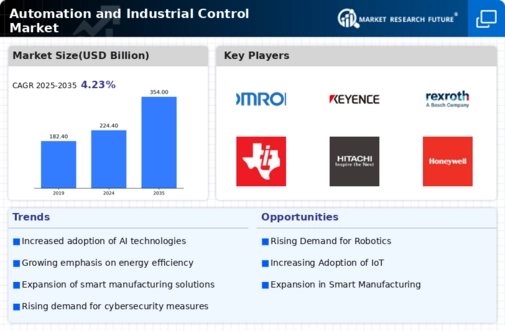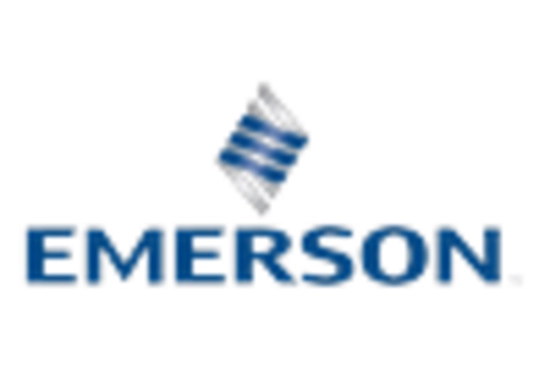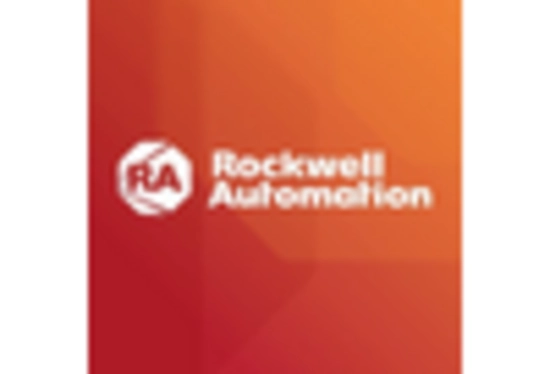Growing Focus on Sustainability
Sustainability has emerged as a critical driver within the Automation and Industrial Control Market. Companies are increasingly prioritizing eco-friendly practices and energy-efficient solutions to meet regulatory requirements and consumer expectations. Automation technologies facilitate the monitoring and management of energy consumption, leading to reduced waste and lower carbon footprints. The market for energy-efficient automation solutions is expected to grow at a compound annual growth rate of 8% over the next five years. This growing emphasis on sustainability not only enhances corporate responsibility but also drives innovation within the Automation and Industrial Control Market.
Increased Demand for Efficiency
The Automation and Industrial Control Market experiences a notable surge in demand for efficiency across various sectors. Companies are increasingly adopting automation technologies to streamline operations, reduce costs, and enhance productivity. According to recent data, organizations that implement automation can achieve efficiency gains of up to 30%. This trend is particularly evident in manufacturing, where automation solutions are employed to optimize production lines and minimize downtime. As industries strive to remain competitive, the push for efficiency drives investments in automation technologies, thereby propelling the growth of the Automation and Industrial Control Market.
Advancements in Robotics Technology
The Automation and Industrial Control Market is significantly influenced by advancements in robotics technology. Innovations in robotic systems, including collaborative robots (cobots) and autonomous mobile robots (AMRs), are transforming operational capabilities. These technologies enable businesses to automate complex tasks, enhance precision, and improve safety in the workplace. The market for industrial robots is projected to reach USD 70 billion by 2026, indicating a robust growth trajectory. As organizations seek to leverage these advancements, the demand for sophisticated automation solutions continues to rise, further stimulating the Automation and Industrial Control Market.
Integration of Advanced Data Analytics
The integration of advanced data analytics is reshaping the Automation and Industrial Control Market. Organizations are leveraging big data and analytics to gain insights into operational performance, predict maintenance needs, and optimize resource allocation. This data-driven approach enables companies to make informed decisions, enhancing overall efficiency and reducing operational costs. The market for data analytics in industrial automation is projected to grow significantly, with estimates suggesting a value of USD 20 billion by 2025. As businesses increasingly recognize the value of data, the demand for analytics-driven automation solutions is likely to escalate, further propelling the Automation and Industrial Control Market.
Rising Adoption of Smart Manufacturing
Smart manufacturing is becoming a pivotal trend within the Automation and Industrial Control Market. The convergence of IoT, AI, and automation technologies is enabling manufacturers to create interconnected systems that enhance operational efficiency and flexibility. This shift towards smart manufacturing is expected to drive the market for automation solutions, with projections indicating a growth rate of 10% annually. As manufacturers seek to adapt to changing market demands and improve responsiveness, the adoption of smart manufacturing practices is likely to accelerate, thereby influencing the trajectory of the Automation and Industrial Control Market.


















Leave a Comment